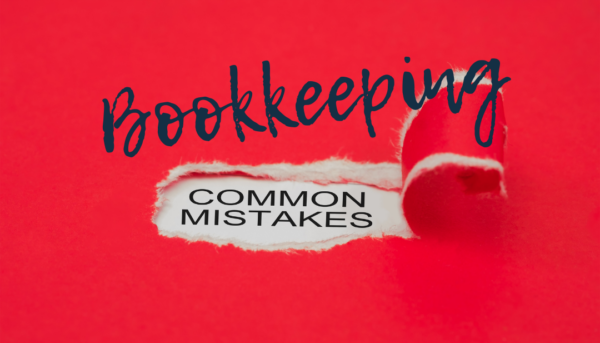Entrepreneurs can absolutely do their own bookkeeping. But for those daring to DIY, I have one piece of advice.
To do it correctly you need to learn the rules and understand the tools.
The rules refer to basic bookkeeping and accounting because there is a method to the madness. The tools refer to the bookkeeping software. Unfortunately, what I often find are entrepreneurs who try to piece together information from YouTube University and the interwebs. They end up with a hodge-podge understanding and a trail of mistakes.
If this goes unchecked a business may:
– Miss out on tax deductions
– Overreport or underreport income
– Have inaccurate financial reports and make decisions based on incorrect data
Here are the top five bookkeeping mistakes DIY entrepreneurs (and sometimes their bookkeepers too—think your third cousin’s friend’s brother) often make.
THE TOP FIVE
1. Misplaced Transactions – It’s crucial that each transaction is recorded on the correct financial statement. Some transactions should be placed on the balance sheet, while others live on the P&L or income statement. Misplaced transactions mean your data is not correct. This is where an understanding of basic accounting and bookkeeping comes into play.

2. Skipping Monthly Reconciliations: A Hidden Hazard – Reconciliation is the process of ensuring your financial system (QuickBooks, Xero or Zoho) agrees with your bank. Failing to reconcile your accounts monthly can allow errors to accumulate unnoticed. Reconciling regularly can prevent fraud or late payments from clients going undetected for long periods. Regular reconciliations help maintain accuracy and provide a true reflection of your business’s financial health.
3. Credit Confusion: Untangling Cards and Loans Accurately recording transactions involving credit cards and loans requires distinguishing between principal and interest. While the principal portion of the payment goes on the balance sheet, the interest goes on the P&L. Misrecording these will distort your financial statements, leading to an overreporting of potential deductions if not corrected.
4. The P&L Illusion – A common misconception is that the profit and loss statement (P&L) indicates how much cash is available. The P&L shows profitability, not cash flow, which can lead to misunderstandings about the financial strength of your business and result in poor business decisions.
5. Invisible Costs: Payment Processor Fees – Payment processor fees are a cost of doing business for most businesses. These can be easy to miss as they are taken from the sale before it ever hits a business’s bank account. Failing to properly record payment processor fees can hide true costs and cause businesses to underreport income. To correct this, the full sale amount should be recorded as income while the processing fees should be reported as an expense. This is where understanding the tools, or software, comes into play to know exactly how to do this.
By steering clear of these common errors, DIY bookkeepers can better manage their financials and steer their business towards sustainable success. And remember, seeking professional advice can prevent these mistakes from becoming costly setbacks. This is why I created Foundations.
The Foundations program is ideal for businesses that are not quite ready to hire a done-for-you solution but need to establish sound financial systems. If you’re looking to build a strong financial foundation with professional guidance go here to learn more >>> Foundations.
💫SPECIAL INTRODUCTORY OFFER: Enjoy a 40% discount on the monthly fee, available for those who sign up now through January 31, 2025. Space is limited.

